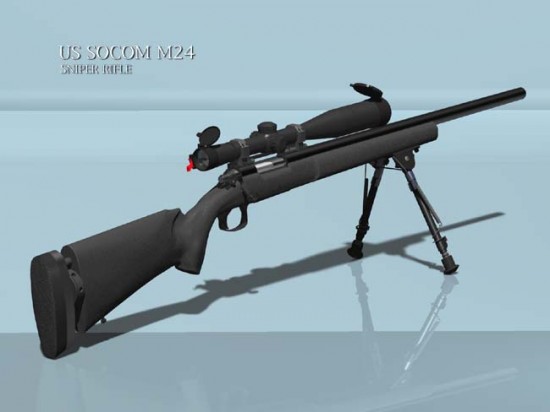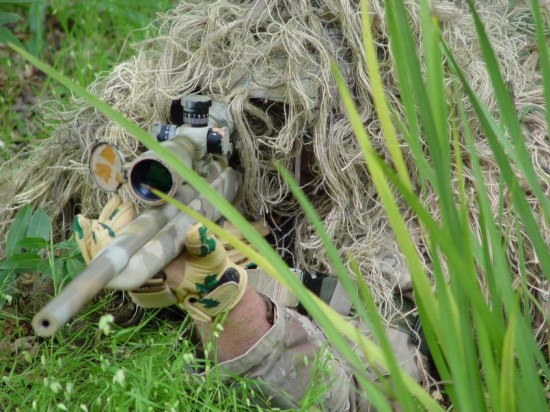viernes, 30 de septiembre de 2011
top 10 sniper rifles
No 10. M24 (American)

| Calibre: | 7.62x51mm NATO (.308 win) |
| Operation: | Bolt Action |
| Feed: | 5-Round internal magazine |
| Weight: | 12.1 lb (5.49 kg) empty without telescope |
| Length: | 43in (1092mm) |
| Sights: | 10×42 Leupold Ultra M3A telescope sight (Mil-Dots), plus detachable emergency iron sights. (Redfield Palma International) |
| Barrel: | 416R Stainless Steel, 24″ length, 1:11.2″ twist, 5 radial land grooves |
| Stock: | HS Precision – adjustable length. |
| Max Effective Range: | 800 meters (875 yards) |
| Expected Accuracy: | 1 MOA with M118 .5 MOA with M118LR |

The rifle had a very quick development cycle as the US Army had decided it wanted to get snipers back into the US Army and was in the process of developing the B4 identifier and the school to award it. There was a major short fall of M21′s which was the standard sniper rifle at that point of time and the Army figured it would need 10,000 sniper rifles of which they didn’t have nearly that many M21′s. So a new sniper rifle was developed at the same time and it was done in a record 22 months. The Weapon System Matrix Manager for the M24 was Major John Mende and he explains that the long action actually had nothing to do with the ability to convert to a .300 Win Mag but was a product of that quick development time. The rifle was intended to be chambered in the .30-06 as the -06 was a type classified munition for the Army unlike the .300 WM at the time. They wanted to have a high power load for the .30-06 eventually developed. As development of the system was moving forward they discovered that there was not enough .30-06 ammo in a single lot in the Army’s inventory to test and develop the system so they quickly changed to the 7.62x51mm NATO (308 Win) and left the action the same as there was not enough time for the manufacturers of the stock and floorplate to make the change to short action. They also fully believed they would later do a product improvement update and convert all the M24′s to .30-06. The fact that they could convert them to .300 Win Mag was an unexpected benefit to the SF groups and was never actually designed into the system
jueves, 22 de septiembre de 2011
redes
Una red de computadoras, también llamada red de ordenadores o red informática, es un conjunto de equipos informáticos conectados entre sí por medio de dispositivos físicos que envían y reciben impulsos eléctricos, ondas electromagnéticas o cualquier otro medio para el transporte de datos con la finalidad de compartir información y recursos. Este término también engloba aquellos medios técnicos que permiten compartir la información.
La finalidad principal para la creación de una red de computadoras es compartir los recursos y la información en la distancia, asegurar la confiabilidad y la disponibilidad de la información, aumentar la velocidad de transmisión de los datos y reducir el coste general de estas acciones.2
La estructura y el modo de funcionamiento de las redes informáticas actuales están definidos en varios estándares, siendo el más importante y extendido de todos ellos el modeloTCP/IP basado en el modelo de referencia OSI. Este último, estructura cada red en 7 capas con funciones concretas pero relacionadas entre sí; en TCP/IP se reducen a 4 capas. Existen multitud de protocolos repartidos por cada capa, los cuales también están regidos por sus respectivos estándares
| # | Capa | Unidad de intercambio |
|---|---|---|
| 7. | Aplicación | APDU |
| 6. | Presentación | PPDU |
| 5. | Sesión | SPDU |
| 4. | Transporte | TPDU |
| 3. | Red | Paquete |
| 2. | Enlace | Marco / Trama |
| 1. | Física | Bit |
Suscribirse a:
Entradas (Atom)